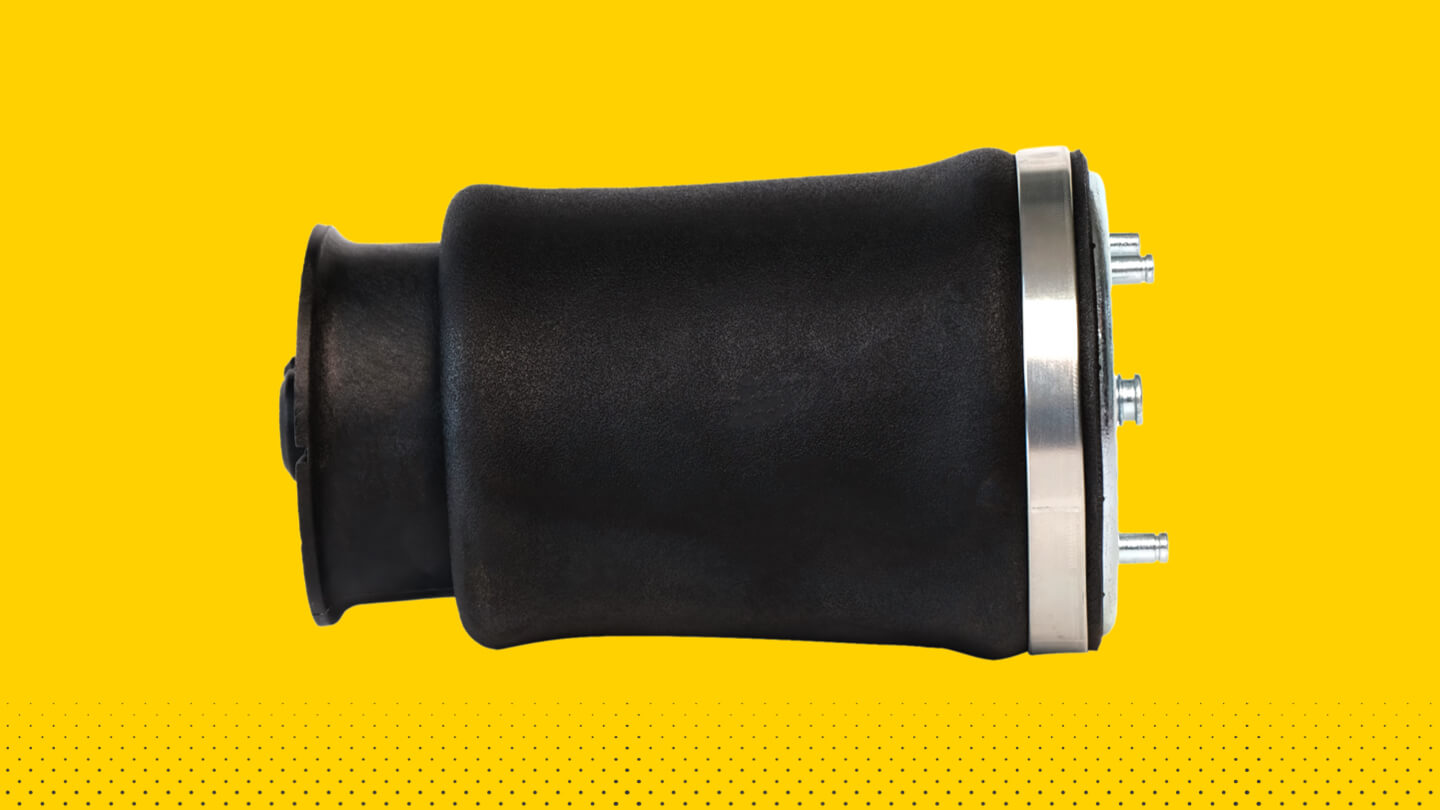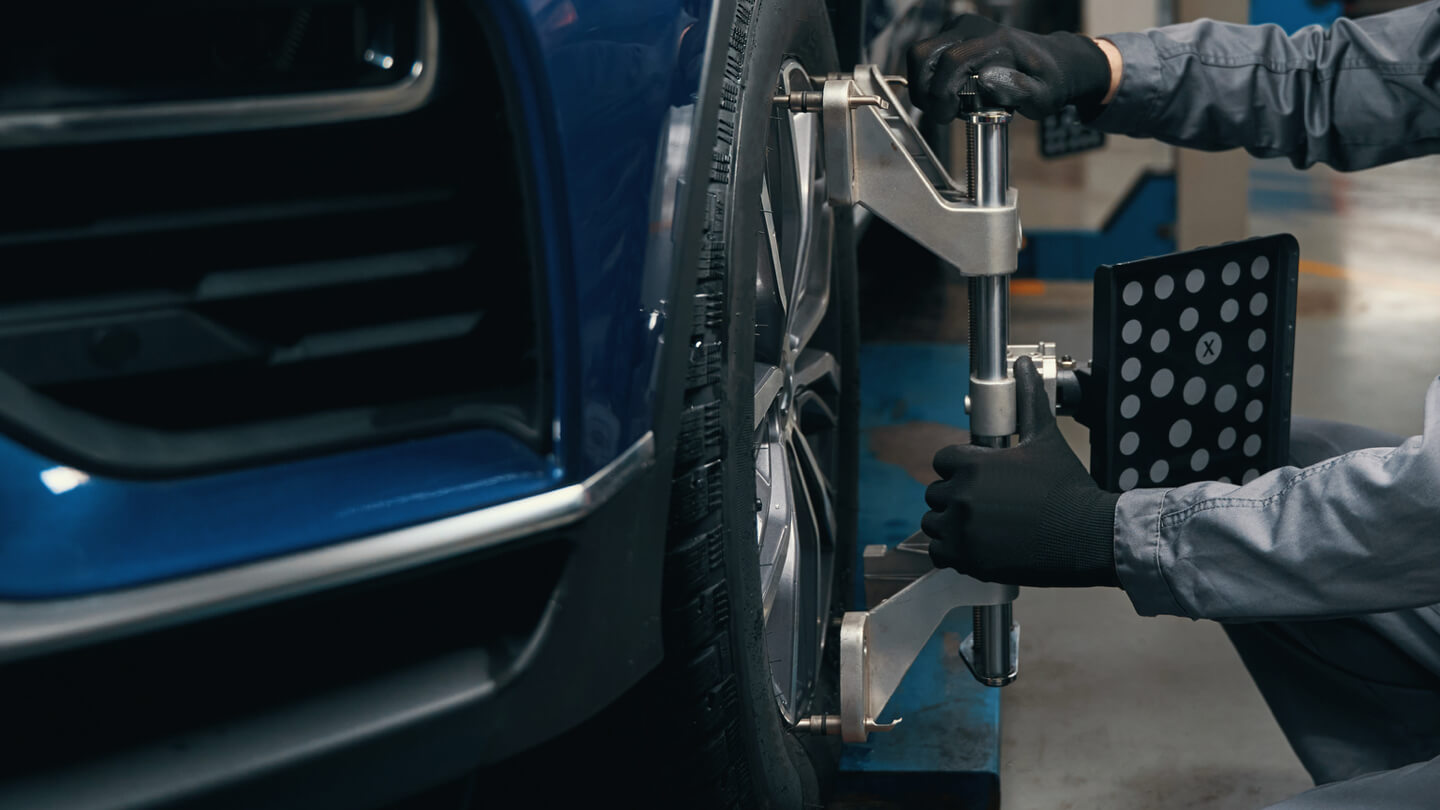
Diagnosing Air Spring Problems
Diagnosing Air Spring Problems
What Are Air Springs?
Air springs are a vital component of air suspension systems. Made from flexible rubber or plastic, they can be adjusted to support the vehicle’s weight and modify ride height. By inflating or deflating the air pressure in the air springs, the air suspension can be raised or lowered. Adjusting the ride height changes how the suspension performs. Choose a softer ride for rough roads or a firmer ride for freeway driving.

What Causes Air Springs to Fail?
While they are designed to deliver reliable service, there are three common reasons why air springs fail.
Wear and Tear
As part of the suspension system, air springs can be damaged over time by general use. Wear, cracks and tears to the rubber bellows is the leading cause of air spring failure. Age and constant exposure to dirt, debris, solvents and chemicals can cause the bellows to degrade and fail.
Compressor Failure
If the compressor is malfunctioning, it can’t adequately keep pressure in the air springs.
Impact Damage
Striking a curb, hitting a large pothole or other collision can cause damage to the air springs.
Signs of Bad Air Springs
Failing air springs can cause several different problems like sagging ride height, rough ride, poor handling and wear and tear on other suspension parts. Driving with failing air springs isn’t safe and should be avoided. Be on the lookout for the signs of failing air springs:
Vehicle Sitting Lower
When the air springs lose air and are no longer properly functioning, the vehicle will visibly sit lower than normal.
Uneven Stance
If one side of the vehicle is sitting lower, it could be an indicator of a bad air spring on that side.
Noisy Air Compressor
An air compressor that is running more than usual can indicate air leaks in the air springs.
Rough Ride
Feeling every bump as you travel down the road is a sign that there could be issues with the air springs.
Damage to Bellows
Tears or cracks into the bellows can cause air spring failure.
Check Air Suspension Light
Bad air springs cause the check air suspension light to illuminate. You may see an icon of a car with an arrow pointing up and down or on older vehicles, it could say “Stop, car too low.”
Diagnosing Failing Air Springs
If you suspect there is an issue with your suspension’s air springs, follow these steps to determine the source of the issue.
Look for Leaks
Inspect the air springs and air lines for leaks.
Air Up the System
Engage the air suspension and keep an eye on how long it takes for the system to air up. Is it taking longer than normal to power up? This is a strong indicator that there is an issue with the system.
Check Compressor
Listen to the compressor – is it running frequently? This can indicate a leak or compressor failure.
Diagnostics
Hook up an OBDII scanner to retrieve any trouble codes that can help identify problems with the air springs.
Pressure Test
Performing a pressure test in each air spring can reveal leaks or other issues. Compare the reads to the manufacturer specifications to identify potential problems.
Repairing the Air Suspension System
When it’s time to make repairs to the air suspension system, look to Monroe® for premium replacement parts. From air springs to air shocks and struts, Monroe has what you need to restore your vehicle’s air suspension system. Monroe air springs help deliver a smooth ride while giving a high level of comfort and control while Monroe air shocks and struts isolate impact-related noise, vibration and harshness to deliver a more comfortable ride.

Learn more about QUALITY SHOCKS, STRUTS & STRUT ASSEMBLIES, FIND THE RIGHT CAR PART, or FIND A LOCAL REPAIR SHOP today.
The content in this article is for informational purposes only. You should consult with a certified technician or mechanic if you have questions relating to any of the topics covered herein. Tenneco will not be liable for any loss or damage caused by your reliance on any content.